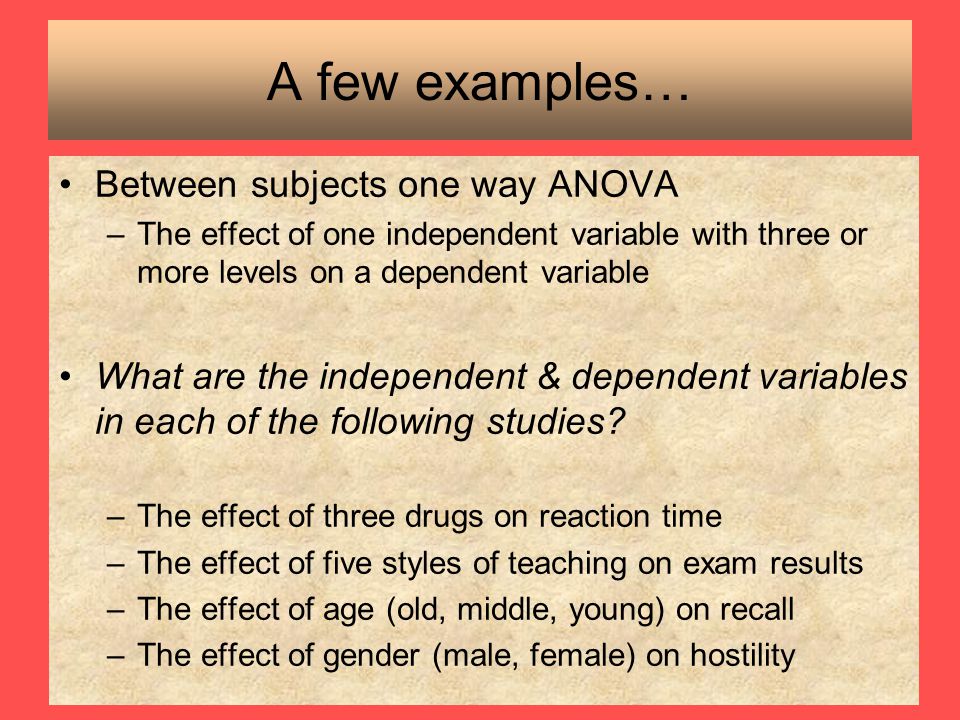


We have tested this using the Levene statistic.

Homogeneity of VariancesĪ requirement for the ANOVA test is that the variances of each comparison group are equal. The key question, of course, is whether the difference in mean scores reaches significance. In particular, the data analysis shows that the subjects in the PostGrad group throw the frisbee quite a bit further than subjects in the other two groups. If you look above, you’ll see that our sample data produces a difference in the mean scores of the three levels of our education variable. It’s worth having a quick glance at the descriptive statistics generated by SPSS. Let’s deal with the important bits in turn. SPSS produces a lot of data for the one-way ANOVA test. You’ll see the result pop up in the Output Viewer. Review your options, and click the OK button. Once you’ve made your selections, click Continue.Īt this point, you’re ready to run the test. Descriptive statistics and a Means plot are also useful. You should be looking at this dialog box again.Ĭlick Options to bring up the Options dialog box.Īt the very least, you should select the Homogeneity of variance test option (since homogeneity of variance is required for the ANOVA test). Now press Continue to return to the previous dialog box. You should select Tukey, as shown above, and ensure that your significance level is set to 0.05 (or whatever alpha level is right for your study). You need to do a post hoc test to find this out. However, if you’ve got more than two levels it’s not going to tell you between which of the various pairs of means the difference is significant. The ANOVA test will tell you whether there is a significant difference between the means of two or more levels of a variable. You can do this by dragging and dropping, or by highlighting a variable, and then clicking on the appropriate arrow in the middle of the dialog.Īfter you’ve moved the variables over, you should click the Post Hoc button, which will allow you to specify the post hoc test(s) you wish to run. To set up the test, you’ve got to get your independent variable into the Factor box (Education in this case, see above) and dependent variable into the Dependent List box.

This will bring up the One-Way ANOVA dialog box. To start, click on Analyze -> Compare Means -> One-Way ANOVA. The one-way ANOVA test allows us to determine whether there is a significant difference in the mean distances thrown by each of the groups. Our independent variable, therefore, is Education, which has three levels – High School, Graduate and PostGrad – and our dependent variable is Frisbee Throwing Distance (i.e., the distance a subject throws a frisbee). For the purposes of this tutorial, we’re interested in whether level of education has an effect on the ability of a person to throw a frisbee. Our fictitious dataset contains a number of different variables. We’re starting from the assumption that you’ve already got your data into SPSS, and you’re looking at a Data View screen that looks a bit like this. Press the OK button, and your result will pop up in the Output viewer.Click on Options, select Homogeneity of variance test, and press Continue.Click on Post Hoc, select Tukey, and press Continue.Drag and drop your independent variable into the Factor box and dependent variable into the Dependent List box.Click on Analyze -> Compare Means -> One-Way ANOVA.


 0 kommentar(er)
0 kommentar(er)
